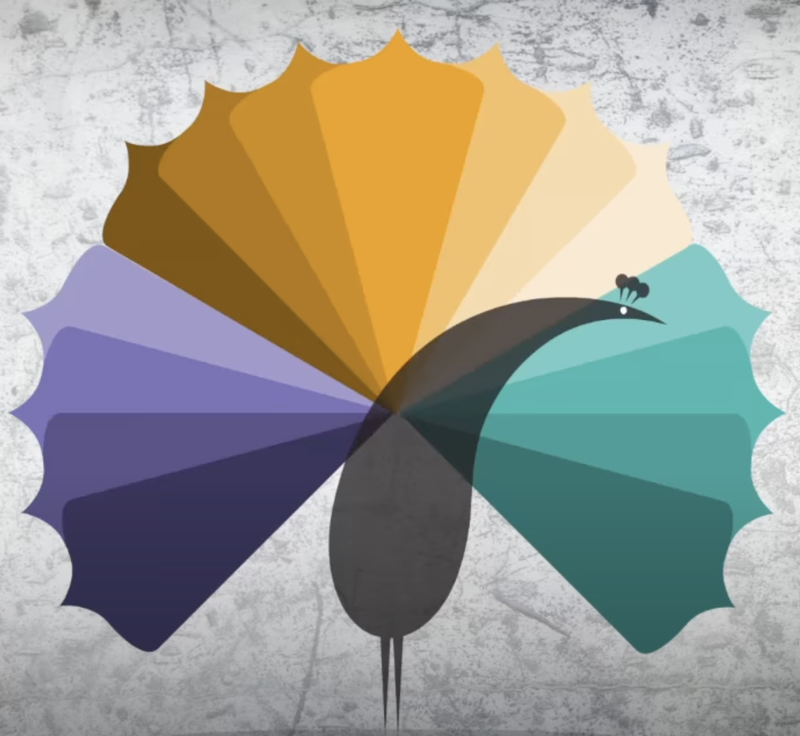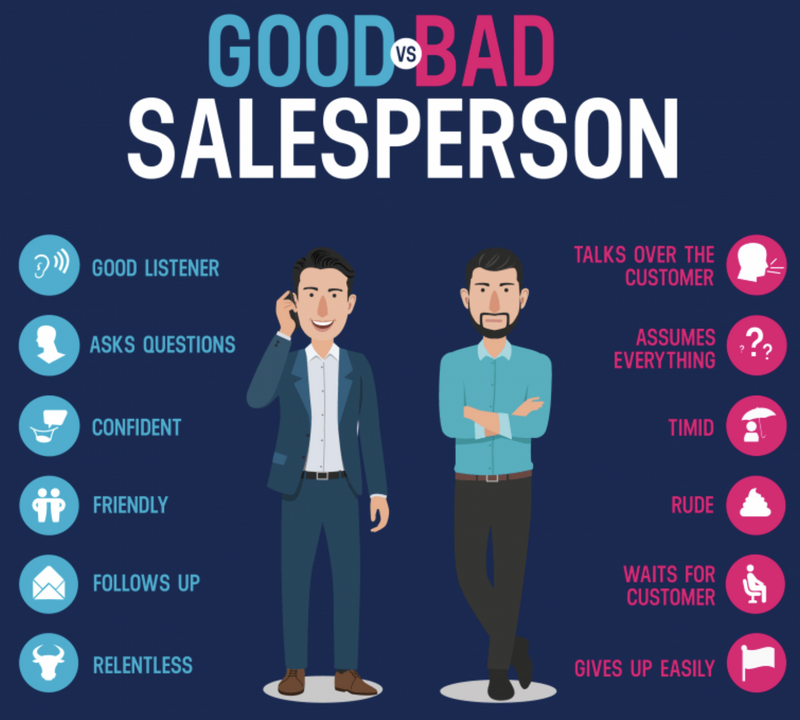
The most common questions that come forward when talking about the Online Customer Experience Design process can be summarised in three...
- "What is Customer Experience Design and why is it important?”
- "What does the Customer Experience Design process look like?" and,
- "Explain this process in a way I can understand"
#1. "What is the Online Customer Experience Design Process and why is it important?"
Answering the “What”:
In the physical retail world where "face to face" selling converts far higher than online retail, a salesperson begins with his/her standard selling approach hoping it's relevant to the consumer. Once selling has begun, the salesperson reads/interprets the consumer's visual (body posture) and verbal cues to know if the content presented is working.
Based on this feedback, an effective salesperson adjusts the approach to remain relevant.
This ability to for a salesperson to deliver information in a way a consumer wants to receive and engage with the information is the foundation to successful selling and this is what the Customer Experience Design process delivers.
Answering the “Why”:
Today’s consumer expects content to be delivered on their terms and if there is the slightest of gaps in this expectation, they do not hang around.
This expectation introduces a high degree of complexity for retailers and B2B’s because the online channel is comprised of rule-based technologies. Every touchpoint must be designed, built, and pre-set in some way, even AI.
And since a website does not have the luxury of reacting to visual/verbal cueing like salespeople can, it must anticipate the consumer's buying process.
Customer Experience Design planning process maps out and defines how the digital channel must look, behave, and interact with people so as to deliver…
- The right content
- At the right time
- In a manner which is easy to engage with across all touchpoints
Those who get this right become market leaders.

#2. "What does the Customer Experience Design process look like?"
This process can be succinctly summarised in four steps.
Step #1. Data analysis:
Analysis of customer data defines and describes what people like and dislike when engaging with an online channel.

The insights that comes from the data drives a retailer’s evolution and ensures there is not a repeat the same mistakes that are happening currently.
A visual design process which does not look at data will not add value.
To gather the right insights requires two different types of data sets…
- Quantitative: Google Analytics (behavioural), Heat Mapping, Eye Tracking, Keyword research
- Qualitative data sets are reviewed: Frontline Employee Interviews, live chat data analysis, incoming call log analysis, incoming email analysis, Social platform interaction analysis
The culmination of all the insights dictates the next steps.
Step #2. Wireframes:
Wireframes are built to define the framework of the new journeys. Because the wireframes are the output of the data review, this step is strategic. It ensures the integrity of the new journeys are not lost in translation in the visual mockup step.

It's also important to note, the wireframes and insight gathering influences technology selection, technology treatment (how technology needs to be configured and possibly customised), and information transfer needs across various business systems.
Step #3. Visual mockups/designs:
Visual mockups or the designs of each page of the website, are created to align to the wireframes and visually illustrate the new journeys being created. The role of design teams is to overlay brand guidelines into the wireframe structure and construct intuitive flows from one page to another.

Step #4. Content:
The above three steps define and map out all new content requirements. This is a mix of copy, imagery, video, instructional content such as sales tools.

#3. "Explain this in a way I can understand" - the Physical Salesperson Analogy
Consider the Customer Experience Design process as being equal to the creation of an effective salesperson selling 24/7.
This analogy will be matched to the same four steps mentioned above.
#1. Data Analysis = Learning the "Do’s and Don'ts" of selling
The data is the business knowledge of the sales tactics that work and those that do not. This brings with it the guidance needed to train the new salesperson.
Experienced salespeople learn this overtime from past experiences.
#2. Wireframes = The new and improved "sales pitch"
The knowledge of what does and does not work produces a new and improved "sales pitch". This new "pitch" defines the flow of a new selling narrative.
#3. Visual Mockups = Visually presenting the salesperson
The new "sales pitch"/narrative is enhanced with an improved presentation of the salesperson (in brand), an improved style of voice (in brand), and dictates the types of interactions occurring between the salesperson and potential customers.
#4. Content = The Words and selling Tools
The content is the actual words that come out of the salesperson to support the new "sales pitch". This “language” is carefully designed to avoid technical language and jargon and includes the creation of new sales tools needed to assist people in online buying decisions.
Conclusion:
With all the above in mind, consider the traits of a good salesperson vs a bad one.
The bad traits of a salesperson seen below is commonly the same thing that happens to under performing websites. One example of this is where a bad salesperson who "assumes everything" is a site with the wrong page layouts, the wrong navigation structure, the wrong functionality, and the wrong content.

Conclusion:
There is one important caveat to the analogy stated above. There is a complex series of technologies, business systems and system integrations that must be working in the background to activate this new and improved salesperson.
The above analogy is designed to unpack the concept of the Customer Experience Design to help the business community understand its importance and place in overall growth planning.
It's not intended to ignore the importance of all the technologies and system connectivity which must sit beneath it.
If the above analogy helps just one person, this content has achieved its purpose.
This article was as tagged as